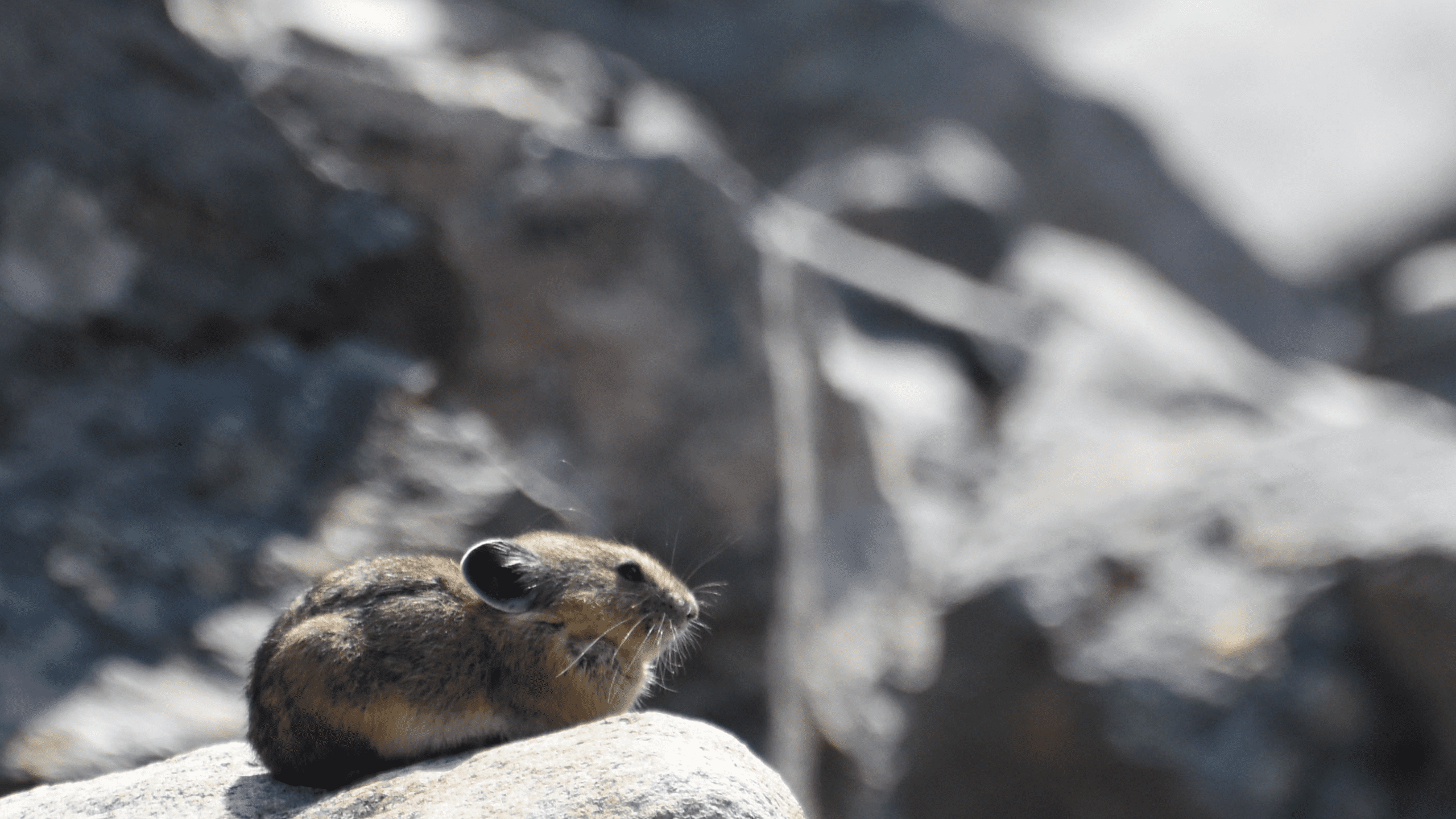Posted: April 24, 2022
Our Wildlife of the Week – 2022 Week 16…
Meet the “American Pika”!
(Ochotona Princeps)
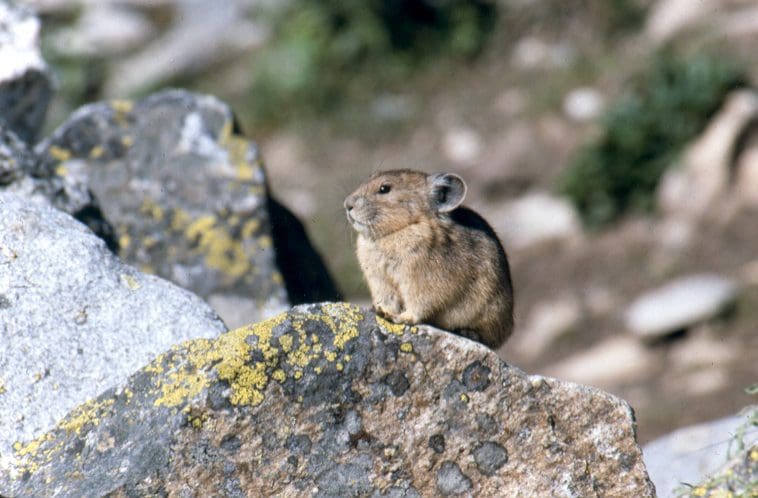
American Pika Physical Description
The American Pika is a small mammal that is closely related to rabbits. They are intermediate in size when compared to other Pika species. Their body mass exhibits a great deal of variation and ranges from 0.27 pounds (121 grams) to 0.39 pounds (176 grams). In certain parts of their range, males are larger than females, but only slightly.1
Their body is ovoid, with short ears, long vibrissae (whiskers), short limbs, and no visible tail. Their back paws are digitigrade, have four toes (compared to five on the front), and range from 0.98 in (25 mm) to 1.38 in (35 mm) in length. American Pikas have a high body temperature (average of 104.2°F or 40.1°C) and relatively low upper lethal temperature (average of 109.6°F or 43.1°C). They have a high metabolic rate, and thermoregulation is behavioral rather than physiological.1
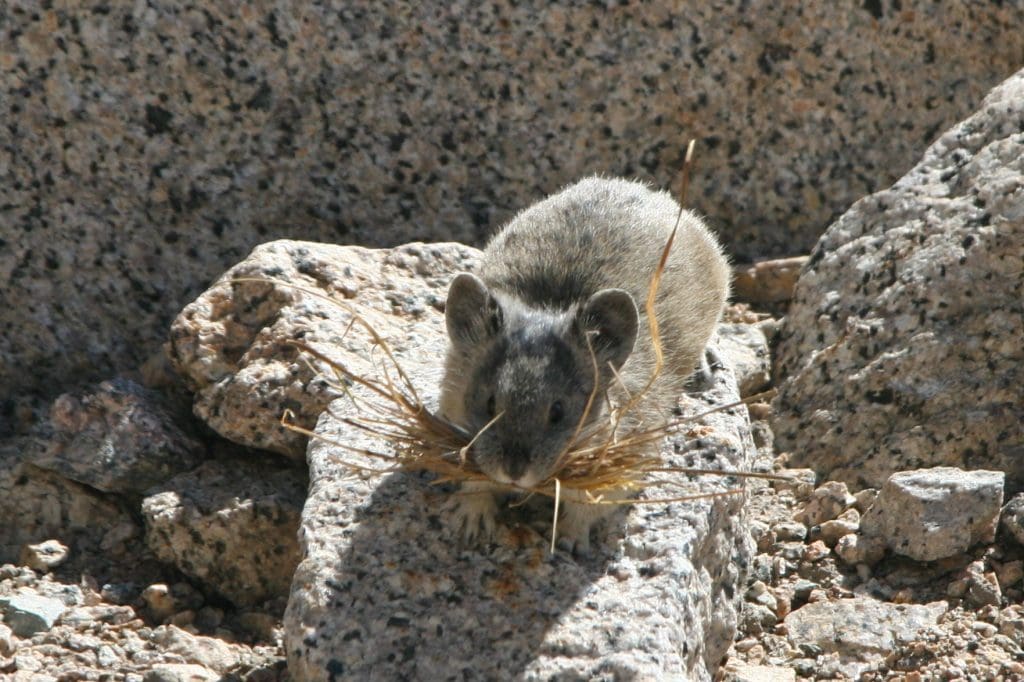
Pelage (the fur, hair, or wool of a mammal) color of American Pikas changes seasonally but maintains an off-white hue on its ventral (the underside of an animal) surface. On its dorsal (the upper side or back of an animal) surface, pelage ranges from grayish to cinnamon-brown in the summer. In the winter, their dorsal pelage is gray and is twice as long as summer pelage. Their ears are round, covered with dark hair on their internal and external surfaces, and edged in white. Their paws are densely furred, including the soles, with the exception of small black naked pads at the ends of the toes.1

Their skull is slightly round with a flat, broad interorbital (situated or extending between the orbits of the eyes) region. Other distinguishing characteristics of the American Pika’s skull include a slender rostrum (a beaklike projection) and nasals that are widest at the front.1
SPONSORED ADVERTISEMENT
American Pika In Action
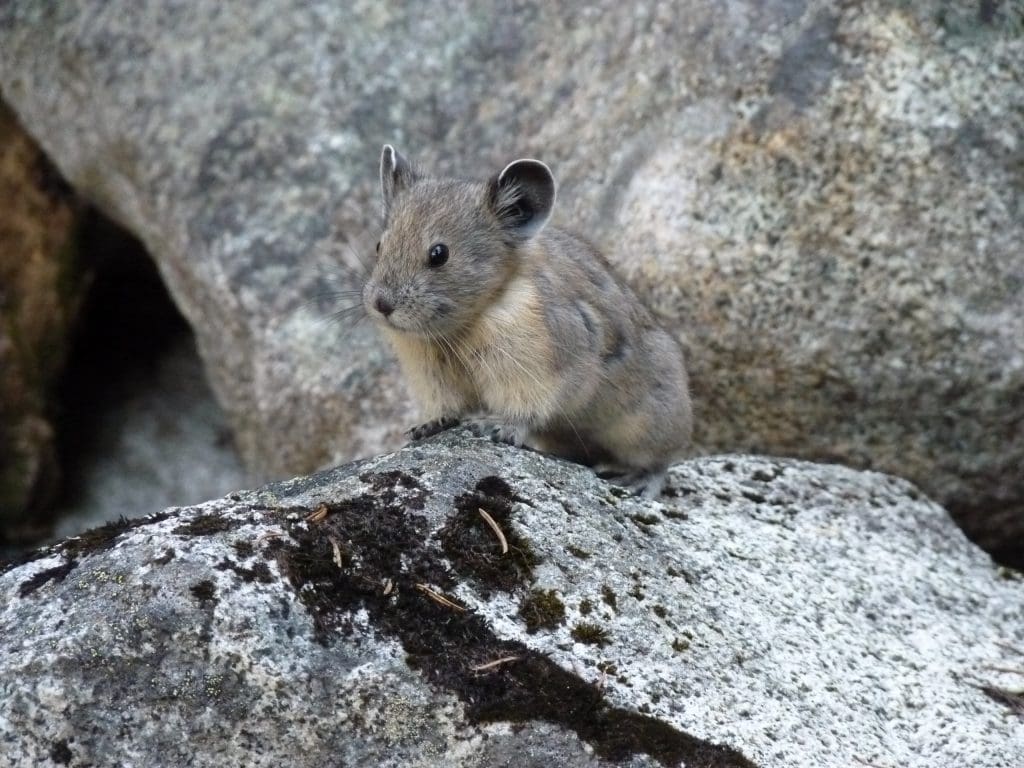
American Pikas are diurnal (active mainly in the daytime) and active above ground for about 30% of daylight hours. During this time, they may survey for predators, feed or cache food, vocalize, or establish and maintain territories. American Pikas do not not burrow but seek shelter in talus interstices (an intervening space, especially a very small one); however, they do make tunnels through the snow during the winter to access meadows and hay piles. During fall and winter, they spend more time in their den and less time active.1
Territories are held by individuals, as they avoid social interaction. Females disperse farther than males, and once dispersed, males gain territories via competition. A juvenile’s chances of survival are contingent upon finding a territory to occupy. Territories are primarily defended via aggression, which includes chasing and fighting. Although aggressive interactions are rare (1 per every 10 hours), they typically occur between members of the same sex and unfamiliar adults.1
Males are generally dominant to females, and adults are dominant to juveniles. Territorial boundaries tend to overlap. On average, inter-territory distance is smallest between mating individuals and largest between members of the same sex. Territorial overlap of mates is greatest in early to mid-summer and reduced in late summer/early autumn, during which time they actively defend their hay piles. Social cohesion between mate pairs is maintained by exhibiting social tolerance and engaging in short call duets.1
SPONSORED ADVERTISEMENT
Where to Spot American Pika
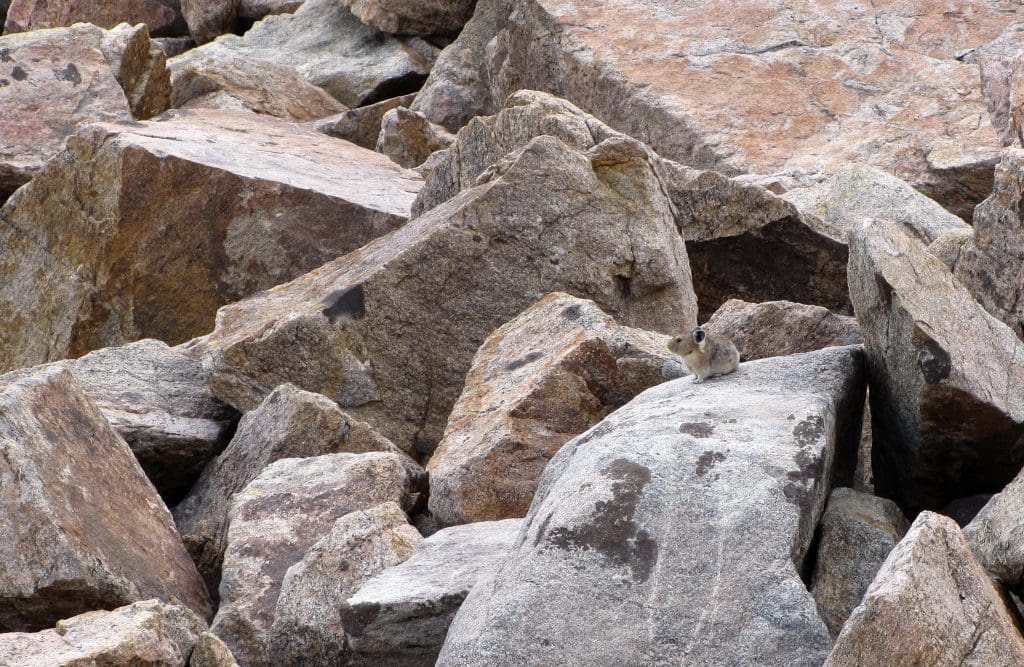
American pikas can be found throughout the mountainous regions of western North America. Their geographic range extends as far south as New Mexico and California, as far north as British Columbia, and as far east as Colorado.1
American pikas inhabit areas of broken rock and talus fields fringed by alpine meadows. They are most common in cool, moist habitats above tree line. In the northern part of their range, they can be found from sea level to 9,843 feet (3,000 meters); however, in the southern part of their range, American pikas are rarely found below 8,202 feet (2,500 meters).1
The American Pika can be found in over 13 National Parks and many other National Park Service sites.2 Including:
- Crater Lake National Park
- Glacier National Park
- Great Basin National Park
- Great Sand Dunes National Park and Preserve
- Grand Teton National Park
- Lassen Volcanic National Park
- Mount Rainier National Park
- North Cascades National Park
- Rocky Mountain National Park
- Sequoia & Kings Canyon National Parks
- Yellowstone National Park
- Yosemite National Park
- Zion National Park
SPONSORED ADVERTISEMENT
American Pika Conservation Status
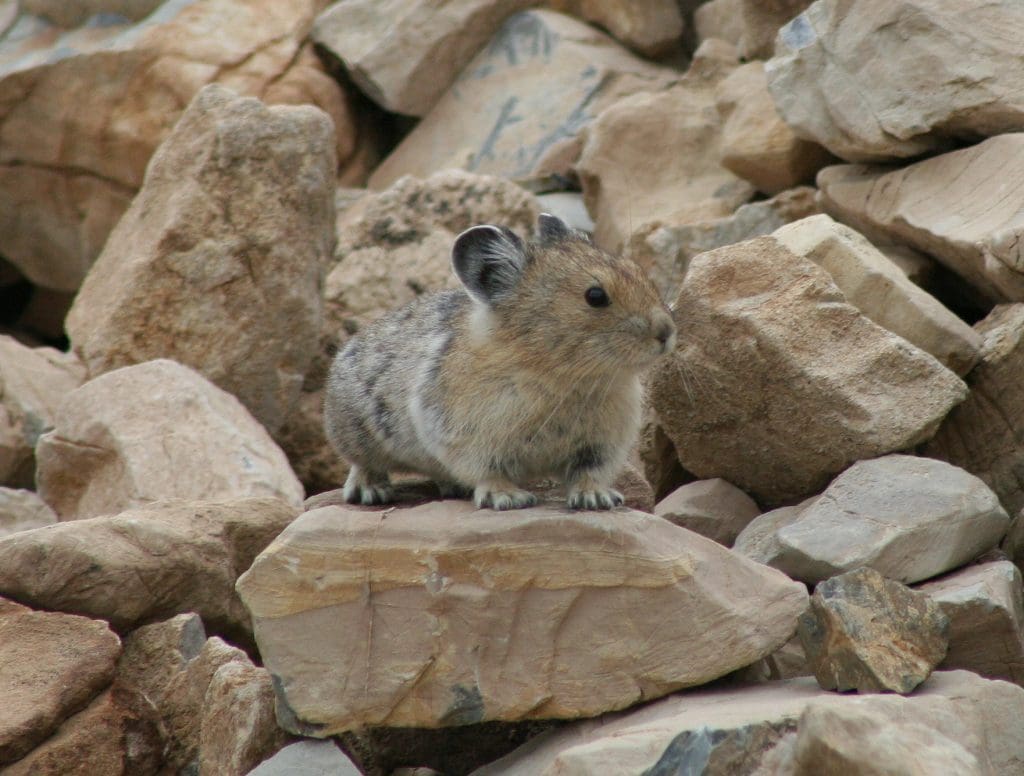
The American Pika is a charismatic indicator species of the potential effects of climate change on mountain ecosystems. Pikas are sensitive to summer heat and rely on winter snowpack for insulation from harsh winter temperatures. The National Park Service stewards Pika populations and seeks to understand the vulnerability of pikas and other mountain species to climate change.3
Due to its abundance and widespread distribution, the IUCN (International Union for Conservation of Nature) lists American Pikas as a species of least concern. However, of the thirty six recognized subspecies, seven are listed as vulnerable and one, Gray-headed Pika (Ochotona Princeps Schisticeps), is listed as near threatened. The seven vulnerable subspecies are all found in the Great Basin and are currently experiencing major threats that have resulted in extirpations (the state or condition of having become locally or regionally extinct).1
The greatest threat to American Pikas, especially those in the Great Basin, is likely global climate change as they are extremely sensitive to high temperatures. American Pikas can die within an hour if ambient temperatures rise above 75°F (23°C). Many populations are expected to migrate north or move to higher elevations. Unfortunately, American Pikas are very poor dispersers.1
Various organizations have suggested placing American Pikas under the protection of the Endangered Species Act. Potential solutions to local population declines may include legislation changes to decrease the amount of global warming stressors, increasing awareness, identification of new protected areas, and re-introductions in areas where they have been extirpated.1
American Pika and You
Have you seen an American Pika in it’s natural environment? Tell us about it in the comments below!
Do you have a picture of these amazing creatures? Share it on social media with us and tag us in your post.
Use the hashtag:
#WildlifeOfTheWeek.
Interested in Wildlife Photography???
Check out this amazing beginners guide from National Geographic:
National Geographic Photo Basics The Ultimate Beginner’s Guide to Great Photography
The above links are provided in this article as affiliate links. Meaning, at no additional cost to you, we’ll earn a commission if you click one and make a purchase. An easy way to help support us if you’re going to buy anyway!
Learn more about all the amazing wildlife in our National Parks and how to safely “Watch Wildlife” on this amazing page with lots of resources from the National Park Service!
Want tips for photographing wildlife? Check out this great article for tips from the National Park Service.
Help support Discover Our Parks by becoming a Patron for as little as $1 a month! Your support will help us continue to provide articles like this and add even more information about our parks to this site.
If you want to make a one-time donation, buy us a coffee!
‘We got some of the above information from the following:
1: Animal Diversity Web – Ochotona Princeps – American Pika
2: NPSpecies – Find Parks Where a Species is Found
3: NPS – Pikas in Peril
Check out these recent posts from Discover Our Parks:
- The Isolated Black-bellied Salamander: Wildlife of the Week – 2023 Week 22
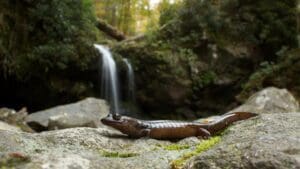
- The Splendid Sandhill Crane: Wildlife of the Week – 2023 Week 21
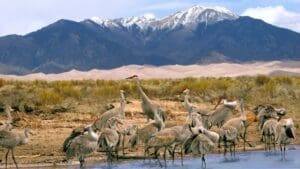
- The Promising Peregrine Falcon: Wildlife of the Week – 2023 Week 20
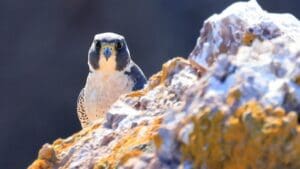
- The Intimidating Killer Whale: Wildlife of the Week – 2023 Week 19

- The Swift Fox: Wildlife of the Week – 2023 Week 18
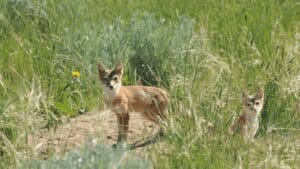
SPONSORED ADVERTISEMENT

